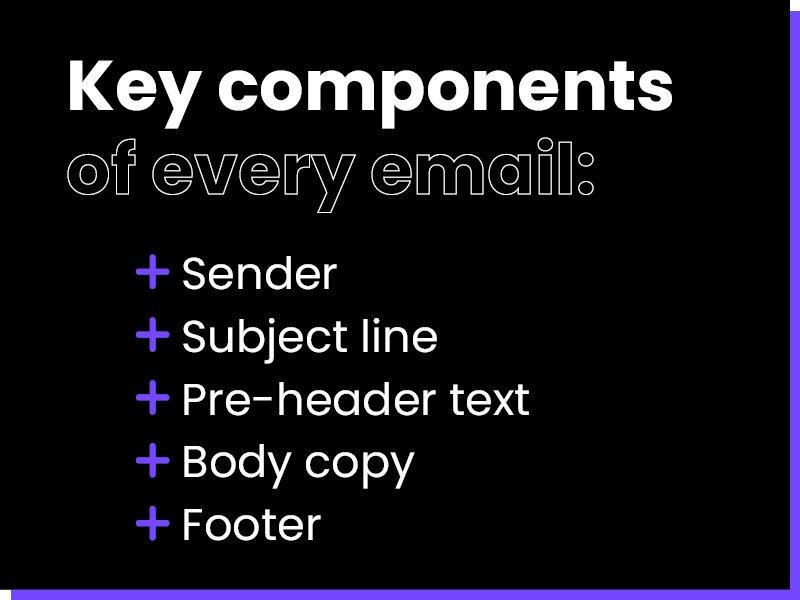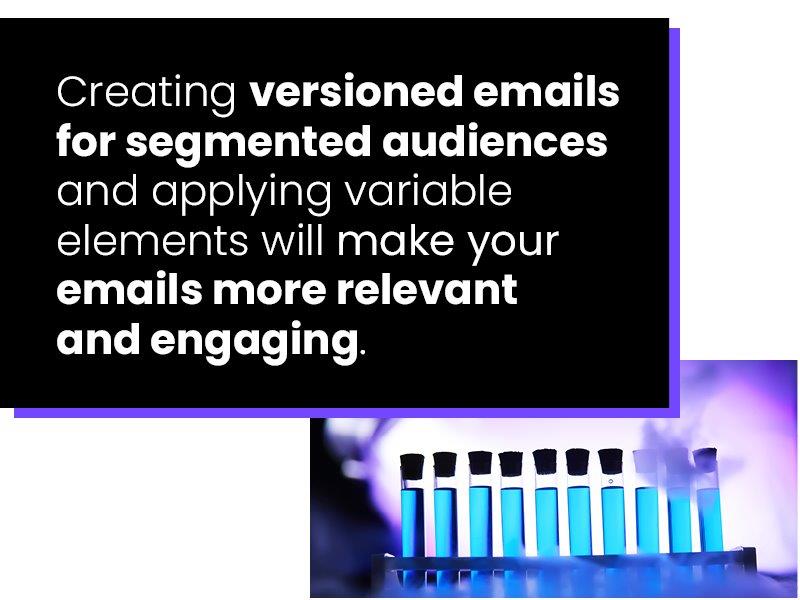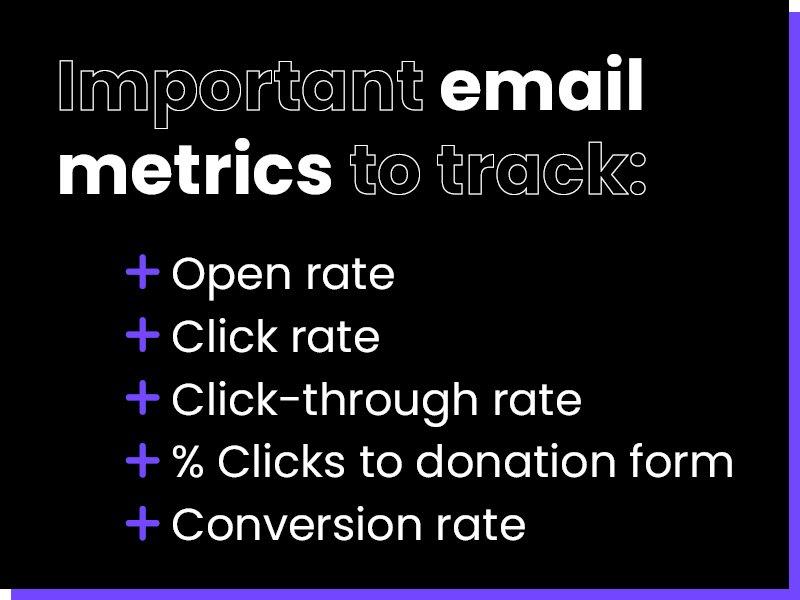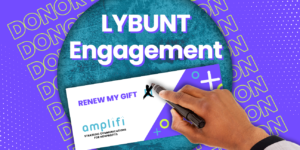Inboxes are a noisy place. And nonprofits are sending more emails than ever. So how do you rise above the noise and stand out in a donor’s crowded inbox and get donors engaging with your emails?
Jesse Park, amplifi’s President and Head of Strategy, joined Qgiv as a featured webinar guest on Sept. 23 to answer that very question. Didn’t have a chance to check out the webinar? Or maybe you just prefer to read rather than watch and listen!
Either way, we’ve complied some of the high-level takeaways from Qgiv’s recent webinar for you in this week’s blog post.
Let’s dive in!

Understanding email.
So, you may be thinking, “what’s so hard, it’s just a simple email!”
But is it really that simple?
After all, we’re not talking about sending a few sentences to a friend or colleague. We’re looking at email as a tool your nonprofit can use to share your message, inspire action, and change the world!
And there are a few key components of every email you may not be thinking deeply enough about! And neglecting these details are a common reason why donors aren’t engaging with your emails.
The sender.
Who is your email coming from?
“If I don’t know who it is, why would I open it?” Jesse asked rhetorically.
It’s important your email sender is recognizable for donors, whether you’re using your organization or a person’s name. It’s all about trust and credibility. So, make sure the sender matches the tone and purpose of the email!
But don’t feel like you have to use the same email sender every time! Like so many things in fundraising, no two emails are the same. And certain messages can be more powerful when they come from a different sender!
And don’t forget to authenticate your email domain to optimize deliverability and reduce the chance your email is flagged as spam!
The subject line.
“The best subject lines are clear, direct, and concise,” Jesse said.
Remember, it’s not about you or your organization. It’s about what the recipient can do to make an impact on a cause you both care about.
Using a donor’s name in the subject line is a great way to grab attention and improve relevancy. It can make it more likely donors will engage with your email.
And don’t be afraid to convey a sense of urgency where applicable! For example, “Hungry children need you night now” works well and can inspire donors to engage with your email.
Pre-header text.
This one often flies under the radar. But pre-header text can help extend the message of the subject line. For example:

You can also set the pre-header text to be hidden in the actual email and only appear in inbox previews.
Body copy.
The body of your email can and should be much more than a copy and pasted version of a direct mail letter. But you also don’t have to start every email with a header image. There are many styles and formats to chose from.
So, match your email design and format with the type of email you’re sending. Some messages may lend themselves well to animations, or embedded video messages.
And don’t forget to include an inspiring call-to-action! Make the action you want donors to take clear by using multiple links throughout your email, including in-line text links, clickable buttons, and linked images.
“We tend to find a lot of people click on images, especially header images,” Jesse said. “So, link everything, but make sure it links to the same place if you have a singular call to action.”
Footer.
Yes, it’s way at the bottom of your email, but you can’t neglect your footer! This is a great place to add icons that link to your social media accounts. Encourage your donors to click these icons to join the discussion online!
You can also give a brief explanation of why someone is receiving this email. Users may re-think unsubscribing when they understand they are receiving this email because they signed up for program updates or your eNewsletter. Give them these options in the footer of every email.

Harnessing the power of your data.
Not everyone needs to receive every email your organization sends. Instead, use your data to help you determine which messages are relevant for recipients.
The best way to do this is using your data to segment your audiences. You can build multiple audience segments from your master list by grouping donors based on giving history, interests, geography, age, email engagement, membership status, and so much more!
“Utilizing segments allows you to determine who should be receiving what email,” Jesse said.
Variable content can help you apply the personal touch and improve relevancy even further. Again, use the data you already have at your disposal! Variable content allows you to address donors by name, mention the date or value of their most recent gift, or recognize how long they’ve been supporting you.
Good Hygiene is important!
But we’re still talking about data. Not showering regularly or wearing deodorant!
Maintaining good proper data hygiene will help you avoid stinky results. So, be sure to validate your email addresses to identify emails that will bounce, are unengaged, and correct any typos from data entry.
It’s important to keep your list updated regularly, whether through automated integration or manual export/import rules. You should remove email addresses that haven’t opened any of your emails in the last 12-18 months.
“This makes sure that those who don’t engage with your emails are not clogging up your system,” Jesse said.
You may be holding on to the hope that just maybe, this time they will open your email and donate. But sending to recipients who will never open your emails does more harm than good by skewing some of the important analytics we’re going to cover in this next section.

Actionable analytics.
Here’s the thing about analytics. They’re only helpful if you understand how to use them! So, let’s walk through some basic email metrics, what they mean, and how to use them to improve your email outreach!
Open rate.
This one is simple. Your open rate is the number of records that opened an email divided by the total number of records you sent it to.
“This generally judges the quality of your sender and subject,” Jesse said. “If your open rates suffer, look at these areas first.”
Click rate.
Another one that is pretty straightforward. To figure out your click rate, divide the total number of email records that clicked a link by the number of records you send the email to.
Generally, this metric is less helpful than analyzing your click-through rate.
Click-through rate.
Now we’re getting a little more specific. Your click-through rate is different from your click rate. Your click-through rate is the number of email records that clicked a link divided by the number of records who opened the email, not that the email was sent to.
Percent of clicks to donation form.
Are your emails effectively guiding recipients to your online donation page? To find out, divide the number of unique records who clicked a link to your donation page by the number of unique records who clicked any link in your email.
Conversion rate.
Online conversion rate is probably the most important metric most nonprofits don’t track! Luckily, if your data is in order, all you need is this simple formula: divide the number of records who clicked on the donation page and donated by the total number of records who clicked to the page.
This metric will help you determine if you need to make changes to your emails or your donation page to improve results.
“Make it easy and let the analytics help you determine what is going on,” Jesse said. “It may be an issue with your donation page, not your emails.”
How do I get more data?
The best way to learn more about how your donors feel about your emails is to run an A/B test. But before you start testing, it’s important to ask yourself some questions to help you stay focused.
For example, what component of the email are you testing? How will you determine the winning version? How many people will you test this on? And how long will the test run for?
All data can be actionable and tells a story of who to re-target, who to let go of, and how to optimize results. So, consider gaining more data by resending an email to those who didn’t open it, or sending a follow up email or direct mailer to those who opened but didn’t click a link.
Follow up with recipients who clicked to your donation page, but stopped short of giving with a more personal touch, like a personal letter or phone call. And continue to tun additional A/B tests. Test the winning version from your last test against something new.
“Data tells a story,” Jesse said. “It shouldn’t just be put in a spreadsheet. It should be actionable.”
Email do’s and don’ts.
To wrap things up, let’s cover a few basic do’s and don’ts when building emails that get donors to engage.
- Do: Take time to plan and strategize your emails.
- Don’t: Wing it to get something out.
- Do: Change up sender names, subjects, and email formats.
- Don’t: Assume you can’t improve or that emails don’t work for you.
- Do: Create list segments to better target, version, and analyze your emails.
- Don’t: Keep sending “junk” to those who don’t want it.
- Do: Use A/B testing to help determine how to improve results.
- Don’t: Guess at what works and why.








